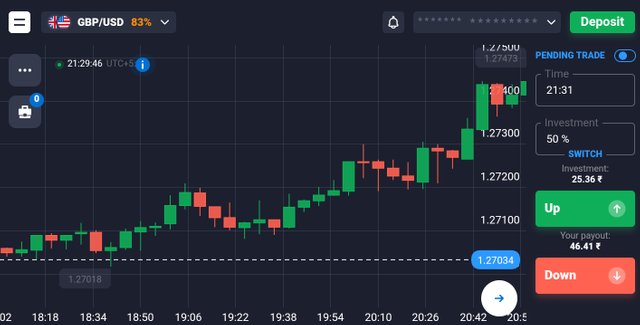How To Trade On Price Action.
Trading binary options using price action involves analyzing candlestick patterns, support/resistance levels, and other price-related information. Here's a simplified guide:
Understand Price Action: Study candlestick patterns, such as engulfing patterns, dojis, and pin bars. Learn to identify key support and resistance levels.
Trend Analysis: Determine the overall trend using higher timeframes. Price action is often more reliable when aligned with the prevailing trend.
Choose Appropriate Timeframe: Select a timeframe that suits your trading style. Short-term traders may use shorter timeframes for quicker analysis.
Identify Key Levels: Locate support and resistance levels where prices have historically reversed. Price action signals near these levels can be more significant.
Wait for Confirmation: Before placing a binary option, wait for confirmation from price action signals like bullish or bearish candlestick patterns at key levels.
Set Expiry Time: Choose an expiry time that aligns with your analysis. If you're analyzing a 15-minute chart, your expiry might be within the next 15-30 minutes.
Risk Management: Determine the amount you're willing to risk on a trade. Some binary options platforms allow setting stop-loss levels.
Place Binary Option: If you expect the price to go up, choose a "Call" option. If you expect a downward movement, select a "Put" option.
Monitor the Trade: Keep an eye on the trade as it progresses. Binary options have fixed outcomes, so there's no need for constant monitoring.
Evaluate and Learn: After the trade, evaluate the outcome and analyze what worked or didn't. Continuously refine your price action strategies based on your experiences.
Always remember that trading involves risks, and it's crucial to have a well-thought-out strategy. Consider practicing with a demo account to build confidence before trading with real money. Additionally, stay informed about market conditions and news that might impact the assets you're trading.
